A Russian reserve captain assessed the prospects of F-16 fighter jets and other western systems in the ongoing conflict in Ukraine in a recent interview with Voennoe Delo, a military affairs website.
According to Vasily Dandykin, the West failed to break Russia last year despite providing Ukraine with a host of weapon systems, and therefore have resorted to delivering the tanks, long-range Ground Launched Small Diameter Bombs (GLSDBs), and maybe after that, even the combat aircraft.
He also emphasized that the US is trying to make the most out of its European Allies. “The Europeans can give the F-16, but the United States seems to have nothing to do with it. They don’t give anything themselves,” Dandykin explained.
“Let’s say the Netherlands will transfer the F-16 or some other country, but the Americans are the ones who give the green light for the delivery,” Dandykin further continued.
Notably, Dandykin believes that the F-16 could pose a severe challenge to the Russian Aerospace Force’s (VKS’) Su-35 and MiG-31 aircraft.
“The F-16 is a 4th generation fighter. It will be too durable against our Su-35, Su-35SM, and MiG-31,” said Dandykin, adding that the MiG-31 and Su-35 are well-equipped to deal with the F-16 if they do indeed meet in the sky over Ukraine.
Furthermore, Dandykin also called for financially incentivizing the Russian military personnel to shoot down the F-16s. However, he believes that not all F-16s be destroyed en masse, but some should be captured for further study of American technology.
F-16s VS Su-35 In Close Combat
US President Joe Biden, on January 30, categorically denied the possibility of sending F-16s to Ukraine. However, Kyiv remains hopeful of receiving F-16s from Netherlands or Poland.
Recently, Ukraine sent an official request to the Netherlands to supply F-16s. Meanwhile, A top Ukrainian official said that Ukraine has also received “positive signals” from Poland, which is ready to pass on F-16 fighters in coordination with NATO.
So, Ukraine will likely receive the Dutch F-16A/B or Polish F-16C/D. As per open sources, the F-16A variant is said to have a thrust-to-weight ratio (TWR) of somewhere between 0.99 to 1.02, while the F-16C variant is said to have a TWR somewhere between 0.91 to 1.06.
Compared to that, the Su-35S is said to have a TWR of around 1.30, and as EurAsian Times has discussed earlier, superior TWR allows an aircraft to accelerate rapidly. While the F-16 has much lower wing loading than the Su-35S. Lower wing loading enables a plane to make tight turns without losing speed.
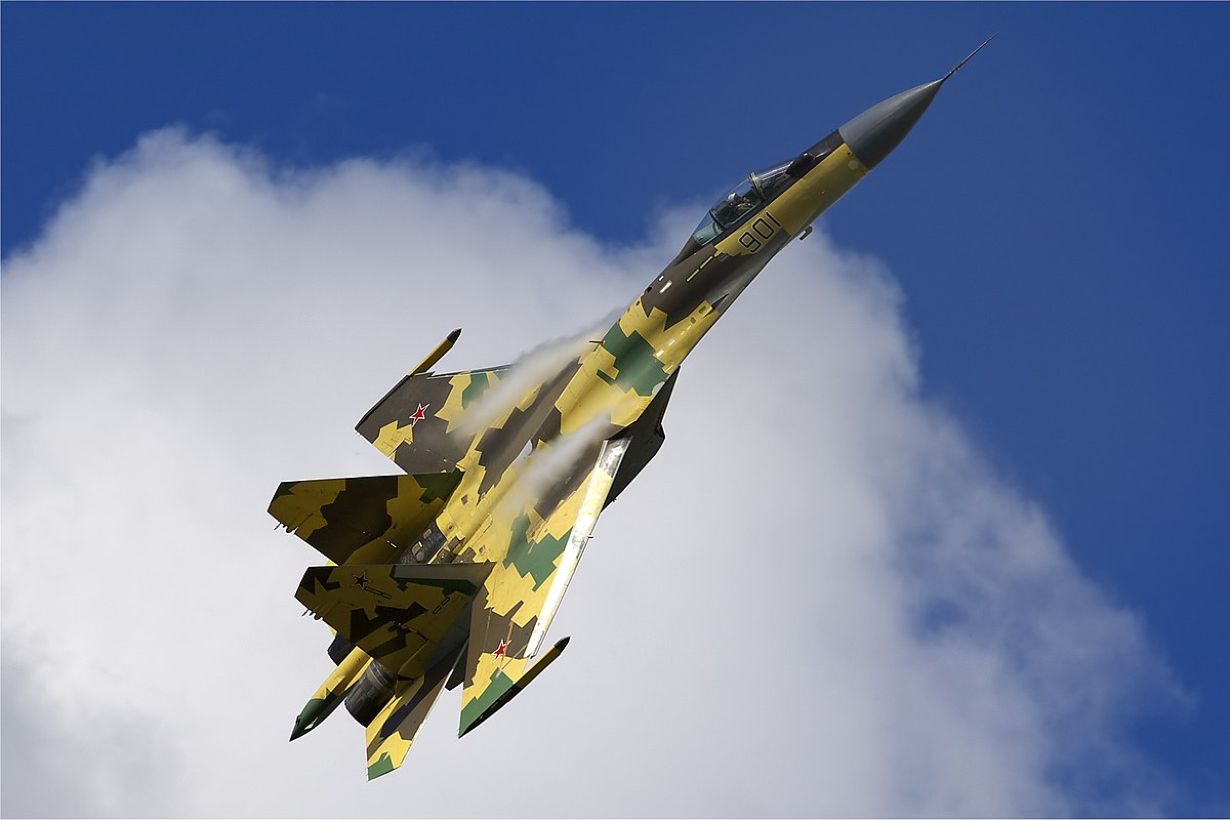
So, in a Withing Visual Range (WVR) combat engagement between an F-16 and Su-35, it should come down to the individual competence of the respective pilots to determine the outcome. In this context, a helmet-mounted display system would be beneficial for pilots.
For WVR combat, the Su-35 uses the R-73 and R-74 infrared-guided missiles, both of which can be controlled from a helmet-mounted sight (HMS). The F-16s would rely on the infrared-guided AIM-9X Sidewinders, which could also be deployed using HMS.
The F-16 and Su-35 are known to have Missile Approach Warning Systems (MAWS) to detect incoming infrared-guided missiles, which could be dealt with flares.
There are well-documented instances of AIM-9 missiles, including the latest 9X iteration, failing against the Russian infrared flares.
In 2017, in Syria, a US Navy F/A-18E Super Hornet obtained a lock onto a Cold War-era Su-22 ‘Fitter’ at a range of around 2.4 kilometers and fired an AIM-9X toward the old-timer. The Su-22 pilot immediately dispensed flares which successfully lured the infrared-guided missile away from his fighter.
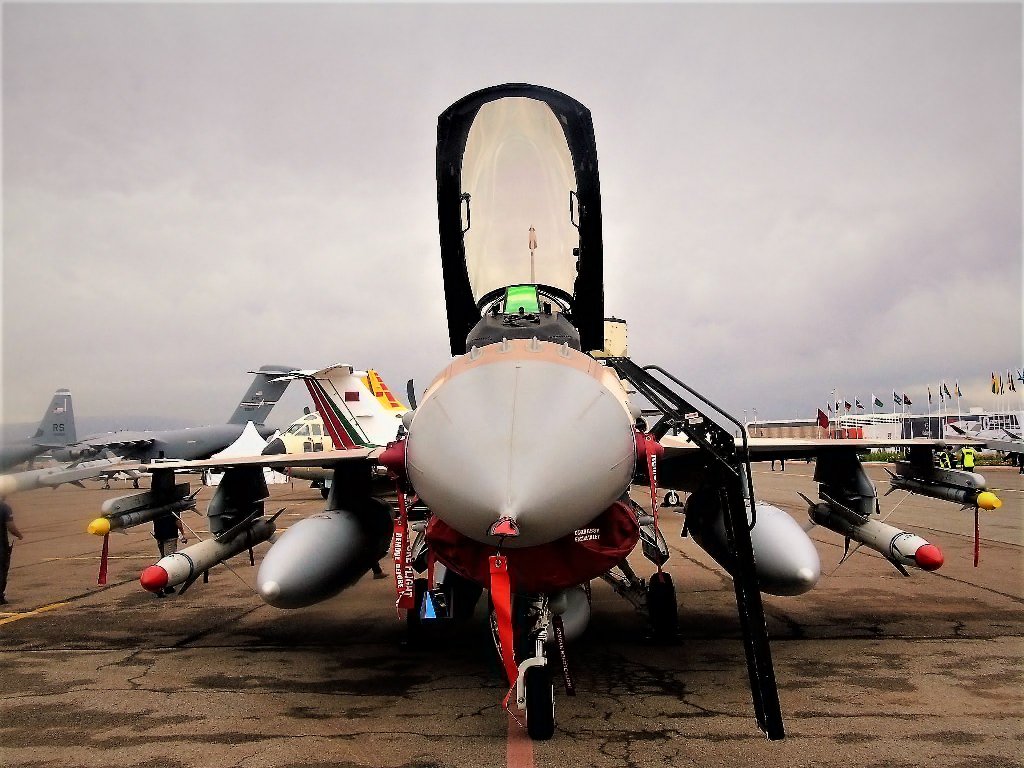
Eventually, the Super Hornet shot down the Su-22 with the long-range AIM-120 AMRAAM. However, the failure of the AIM-9X against the flares came as a surprise to many. Experts at the time suggested that the AIM-9X might have been too accustomed to rejecting American flares.
However, this was not the only instance of AIM-9’s failure against Russian-made flares. In the 1980s, the US Air Force (USAF) maintained the top secret 4477th Test & Evaluation Squadron, which operated Soviet fighters collected from around the world, often captured by allies, at the Tonopah Test Range in Nevada.
Among the several tests of Soviet aircraft carried out by the USAF during the Cold War, there was one where the service tested a flare dispenser that had been on a Su-25 ground attack jet shot down over Afghanistan.
This flare dispenser was tested against the AIM-9P, designed to see past flares. However, the Soviet flares were able to divert the missile successfully.
Even this time, the problem was that the AIM-9P was too specialized for the characteristics of American flares it had been tested against. Whereas the Soviet flares, according to the USAF squadron commander between 1985 and 1987, were “dirty, and none of them looked the same.”
However, considering the respective detection ranges and the armament of the two aircraft, the engagement is most likely to be Beyond the Visual Range (BVR).
F-16s VS Su-35 In Beyond Visual Range Combat
As per Russian sources, the Radar Cross Section (RCS) of F-16 is 3m², and assuming that Ukraine is most likely to receive F-16C/D models from Poland, some open sources have put the RCS of F-16 at 1.2m².
EurAsian Times consulted Colonel Konstantinos Zikidis of the Hellenic Air Force (HAF), formerly a Deputy Commander at the HAF Telecomms and Electronics Depot (ETHM), who explained that the value of 1.2 m² pertains to an F-16C in clean configuration, i.e., without external fuel tanks, pylons, and missiles.
“An F-16C Block 50/52 with a typical configuration of 2 fuel tanks (370 gals), 2 AIM-9X, and 2 AIM-120 missiles would have an RCS value closer to 3m². We could assume a typical RCS value of 2.5m²,” said Zikidis.
An F-16C with an RCS of 2.5m² could be detected by the Irbis-E passive electronically scanned array (PESA) multi-mode radar of the Su-35 at a range of 191 kilometers in volume search mode and 350 kilometers in a cued search mode, with the assistance of airborne radar.
On the other hand, assuming that the Su-35 exhibits an RCS value of 3m², even the latest Viper variant of the F-16 can detect a Su-35 from only about 115 kilometers, using its APG-83 Active Electronically Scanned Array (AESA) radar.
So clearly, the Flanker-E has an advantage in radar detection, an essential prerequisite for success in BVR combat.
For BVR engagements, the F-16 would rely on AIM-120 AMRAAM missiles with a range between 50-160 kilometers depending upon the variant, while the Su-35 could rely on its R-77-1 missiles with an officially stated range of over 190 kilometers.
The Russian Su-35S, armed with the R-77-1 air-to-air missile (AAM), has been very effective and lethal against Ukrainian aircraft throughout the war, as per a study on the Russian Air War in Ukraine conducted by the London-based Royal United Services Institute (RUSI).

Ukrainian fighter pilots cited by the experts at RUSI admit that Russia’s Su-35S completely outclass Ukrainian Air Force fighters.
The difference in technology between the aircraft of the two air forces mainly comprises the R-77-1 coupled with the excellent look-down, shoot-down performance of the Irbis-E radars onboard the Russian fighters.
In this context, the service ceiling of the two aircraft might play an important part. The F-16 has a service ceiling of around 15 kilometers, whereas the Flanker’s ceiling exceeds that by about three kilometers.
Moreover, the Su-35 could also use its formidable long-range R-37M missile, which is of particular concern to the Ukrainian pilots, according to an American media outlet, which cited a Ukrainian MiG-29 pilot describing it as “f*****g dangerous.”
The R-37M is a long-range air-to-air missile (AAM) capable of hitting high-speed air targets from more than 300 kilometers!
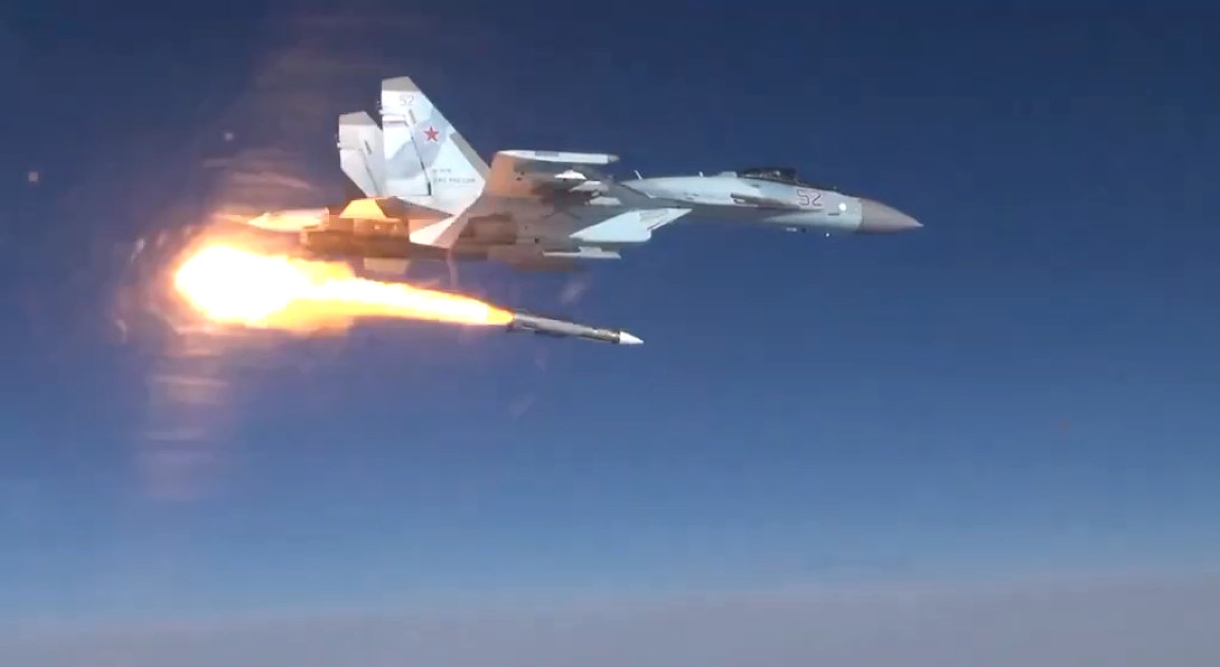
Also, the Su-35’s Irbis-E, because of its ability to rotate, offers the Flanker a much broader ‘look’ angle of 120 degrees off the centerline of the jet instead of the usual 60 degrees, which can be tactically very advantageous to perform a ‘beaming maneuver’ to evade detection by an enemy fighter.
As EurAsian Times discussed earlier, a beaming maneuver involves a fighter turning 90 degrees away (perpendicular) from an enemy fighter to have a near-zero radial velocity against the enemy aircraft.
All current fighter radars are known to use the doppler shift to measure a target’s relative velocity. They filter out the low relative velocities of objects like ground clutter or a ‘beaming fighter’ that is not moving towards or away from the enemy radar.
However, the issue is that while performing a beaming maneuver, the fighter jet would lose its radar picture of the enemy it is trying to evade.
Even worse is that any radar-guided missile fired from the now-beaming fighter will not be able to receive mid-course updates. Those missiles’ chances of a kill will reduce, particularly if fired initially at long range.
This is where the Irbis-E’s ability to rotate comes in. It offers a far greater field of view and enables lower detectability for the Su-35 due to enhanced situational awareness for the pilot in case of beaming maneuvers.
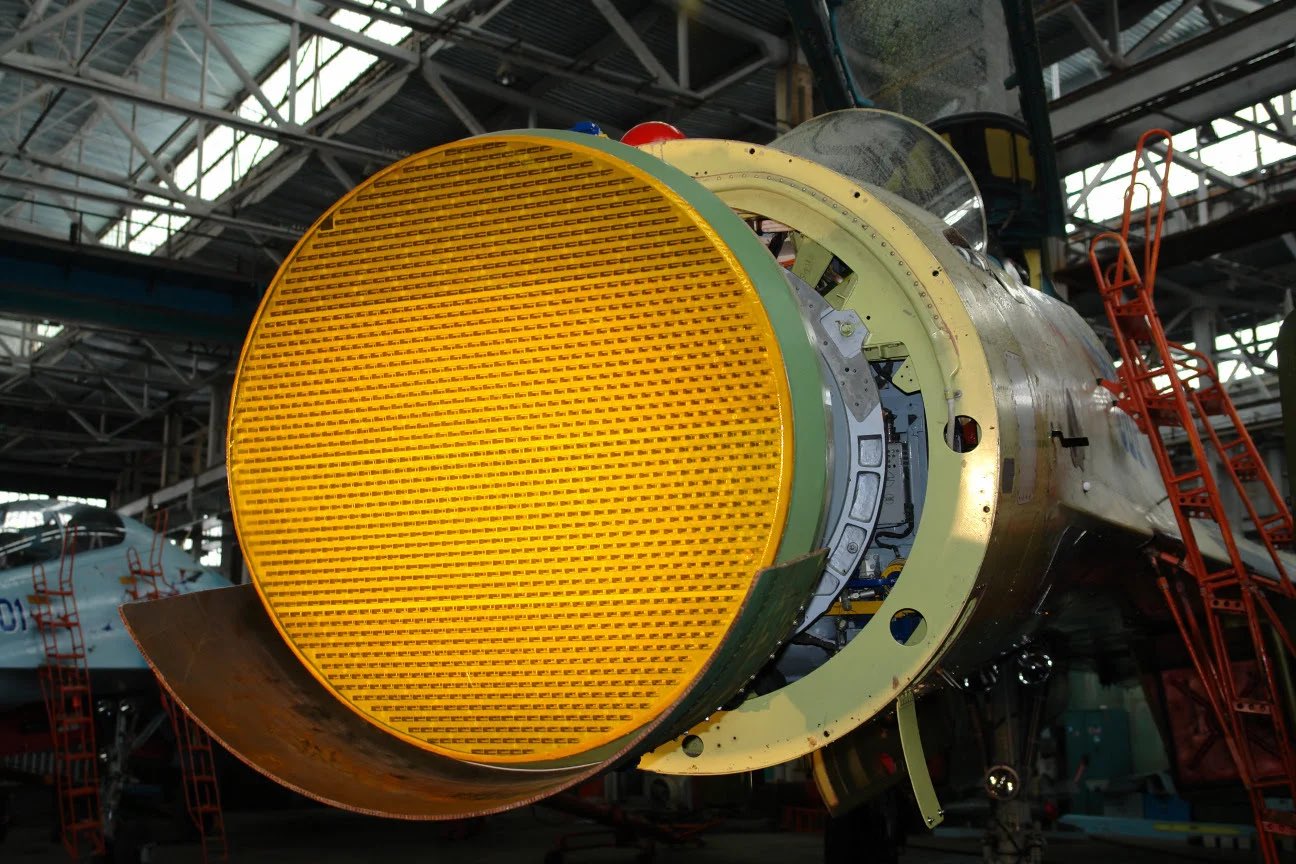
So, a Su-35 pilot can keep track of the missiles already fired in the direction of the F-16 with its radar looking sideways and updating them accordingly. However, even the beaming maneuver has its limits.
When asked about the Su-35’s capability to perform the beaming maneuver, Colonel Zikidis explained that “this tactic may not be applicable when multiple enemy aircraft are in the air.”
F-16s Supported By NATO Airborne Radar!
The Su-35’s advantage in BVR combat would diminish if the F-16s supplied to Ukraine come with NATO’s Link 16 tactical data link network that enables all the assets on the battlefield to share the same picture.
In that case, NATO could employ its AWACS airborne radar near Ukrainian air space to provide tracking information to F-16s and guide the AMRAAMs fired by them mid-flight toward their targets.

However, this capability gap could be bridged for the Su-35s, at least up to some extent, by Russia’s MiG-31BM fighters, as per a study in 2020 by an expert at the London-based Royal United Services Institute (RUSI).
“The latest MiG-31BM variant has apparently been upgraded with significantly improved datalinks to allow it to play an airspace quarterback role,” wrote Professor Justin Bronk, a Senior Research Fellow for Airpower and Technology in the Military Sciences team at RUSI.
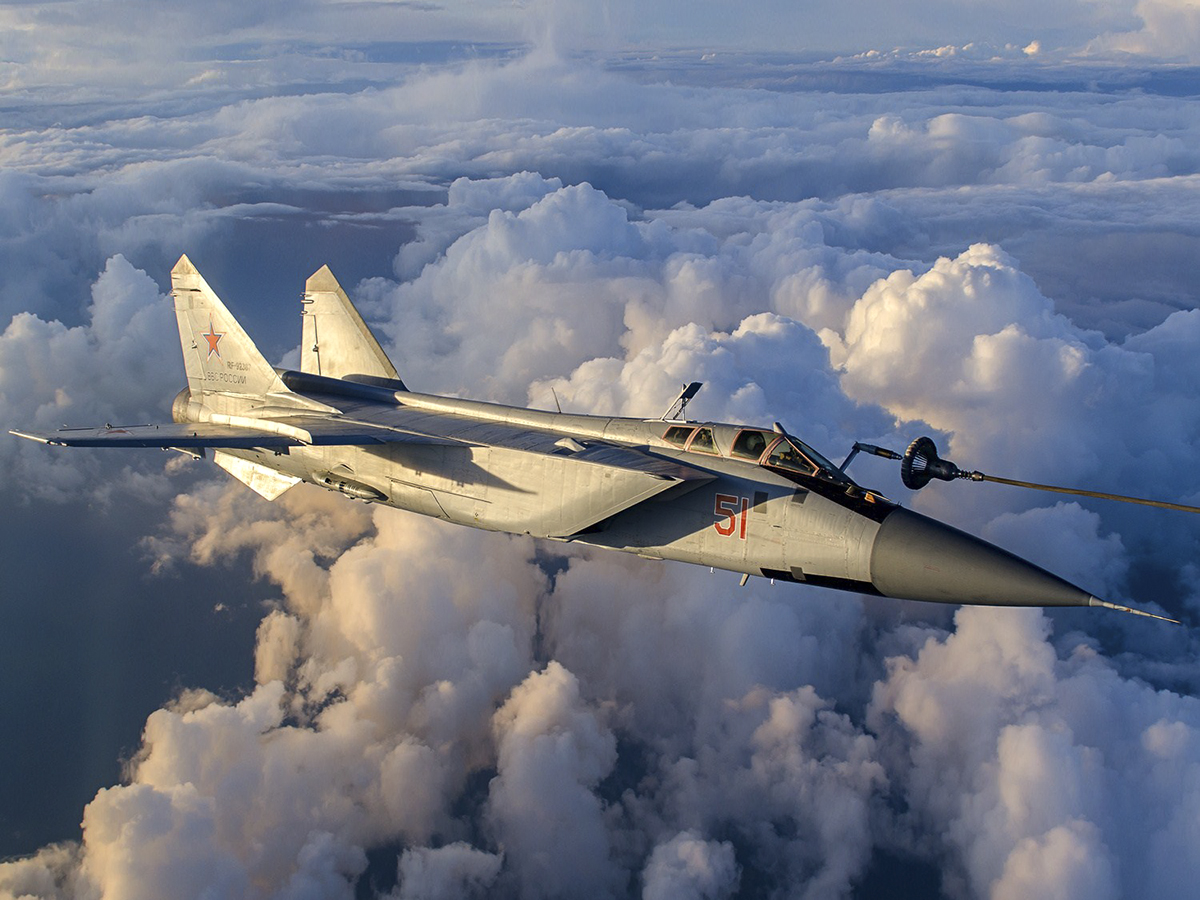
With the help of these datalinks, the MiG-31BM can transfer its radar picture to the Su-35s and other Russian aircraft without the latter even turning their radars on, thereby enabling radar-silent attacks.
As per Russian sources, MiG-31’s updated Zaslon-AM radar’s detection range against a target with an RCS of 3m² (F-16) is up to 240 kilometers.
However, it is also important to note that the MiG-31BM’s datalinks and mission systems are known to have reliability issues.
That said, experts have warned that NATO AWACS platforms supporting the Ukrainian F-16s could make them active participants in the conflict in the eyes of the Russian leadership.
Deputy Chairman of Russia’s Security Council and Former President Dmitry Medvedev warned last year that NATO personnel actively participating in the conflict will become a legitimate target” for the Russian armed forces.
When asked how likely the Russian military would decide to take out the NATO AWACS platform supporting F-16s, Colonel Zikidis said, “No, this would invoke a war between NATO and Russia. I don’t believe Russia would like the whole NATO coming against it.”
“Russia might try to keep NATO AWACS away using fighters with long-range missiles and anti-aircraft systems. However, they would not fire against a NATO asset, except if such an asset has entered into Russian territory, has been properly warned, and continues to fly within Russian airspace. In general, Russia would try to avoid escalation by all means,” Zikidis continued.
- Contact the author at tanmaykadam700(at)gmail.com
- Follow EurAsian Times on Google News





